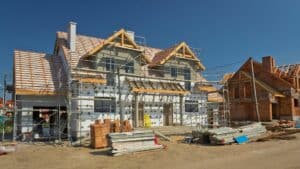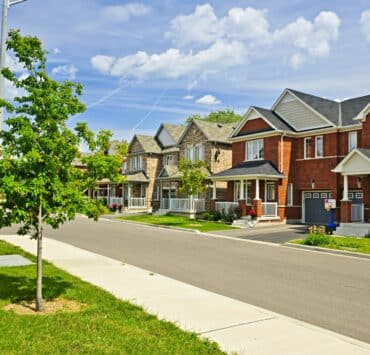In today’s challenging real estate landscape in Europe, the dream of home ownership is slipping away for many, especially for the 30-something professionals seeking to settle down. The surge in real estate prices, compounded by a cost-of-living crisis, has created a daunting scenario, affecting not only the less privileged but also the middle class.
Lamia Kamal-Chaoui, the director of the OECD’s Centre for Entrepreneurship, SMEs, Regions and Cities, emphasizes the severity of the situation, stating,
“The increase in housing prices is tremendous, and it’s even more severe in cities, especially large cities.”
The impact is no longer confined to the poor; it’s now hitting the middle class hard.
The housing market has witnessed a steady increase in prices and rents since 2014, a trend that persisted even during the COVID-19 pandemic. Unlike previous economic downturns, the demand for housing surged during the pandemic due to extended lockdowns and the rise in teleworking.
The geopolitical event of Russia’s invasion of Ukraine in 2022 brought additional challenges, compounding the cost-of-living crisis. Affordable and quality housing became scarcer, leaving many Europeans dealing with mortgage and rent arrears or struggling to keep their homes warm during the winter.
Eurofound reports that the younger population bears the brunt of the real estate crisis. They live with their parents for longer durations, are more inclined to rent than own, and often shy away from seeking better job opportunities in thriving areas due to the inability to afford living there.
This predicament is not just a personal concern but a societal one. Kamal-Chaoui points out,
“if [young people] are not able to afford an apartment, they will never move to a city, no matter how attractive it is.”
While concerns about a real estate bubble persist, early signs suggest that the market might be stable for now. Central banks globally responded to the cost-of-living crisis by increasing interest rates, reversing the decade-long trend of housing price hikes in 2022. However, this poses a new challenge for prospective homeowners as interest rate hikes translate to steeper mortgages.
The core issue of housing unaffordability—shortage of suitable dwellings—remains unresolved and may have been exacerbated by the cost-of-living crisis.
“The demand for housing is increasing, but supply does not keep up,”
notes Kamal-Chaoui. Building new homes faces challenges, primarily due to regulatory and space constraints, particularly in larger cities.
Despite efforts by some cities to convert empty commercial and office buildings into social housing, this approach is not widely accessible, as not all cities have public social housing. Municipalities struggle to formulate housing policies that address residents’ changing needs, as the quality of life in large cities declines. Suburbs and medium-sized cities are also experiencing a housing squeeze, prompting a need for rapid evolution in housing strategies.
As Kamal-Chaoui emphasizes, cities must adapt quickly, reconciling their ambitions with budgetary constraints brought on by the cost-of-living crisis. Mayors, irrespective of political leanings, are now prioritizing the housing shortage, acknowledging that disengagement is no longer an option.
“Some cities have been completely disengaged until recently, but now they are starting to act — they don’t really have a choice,”
She concludes.
Related posts:
 Affordable Rental Provider Repays $710K to Arlington County
Affordable Rental Provider Repays $710K to Arlington County
 Reduce Your Environmental Footprint: Simple Water Conservation Tips for Your Home
Reduce Your Environmental Footprint: Simple Water Conservation Tips for Your Home
 10 Precautions to Stay Safe During a Home Renovation
10 Precautions to Stay Safe During a Home Renovation
 Increase in US Home Construction in 2023 Signals Robust Market Recovery
Increase in US Home Construction in 2023 Signals Robust Market Recovery
 New Construction Homes Sales Increase in 2024: A Look into the Rising Trend
New Construction Homes Sales Increase in 2024: A Look into the Rising Trend



